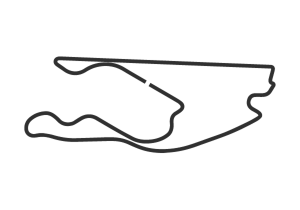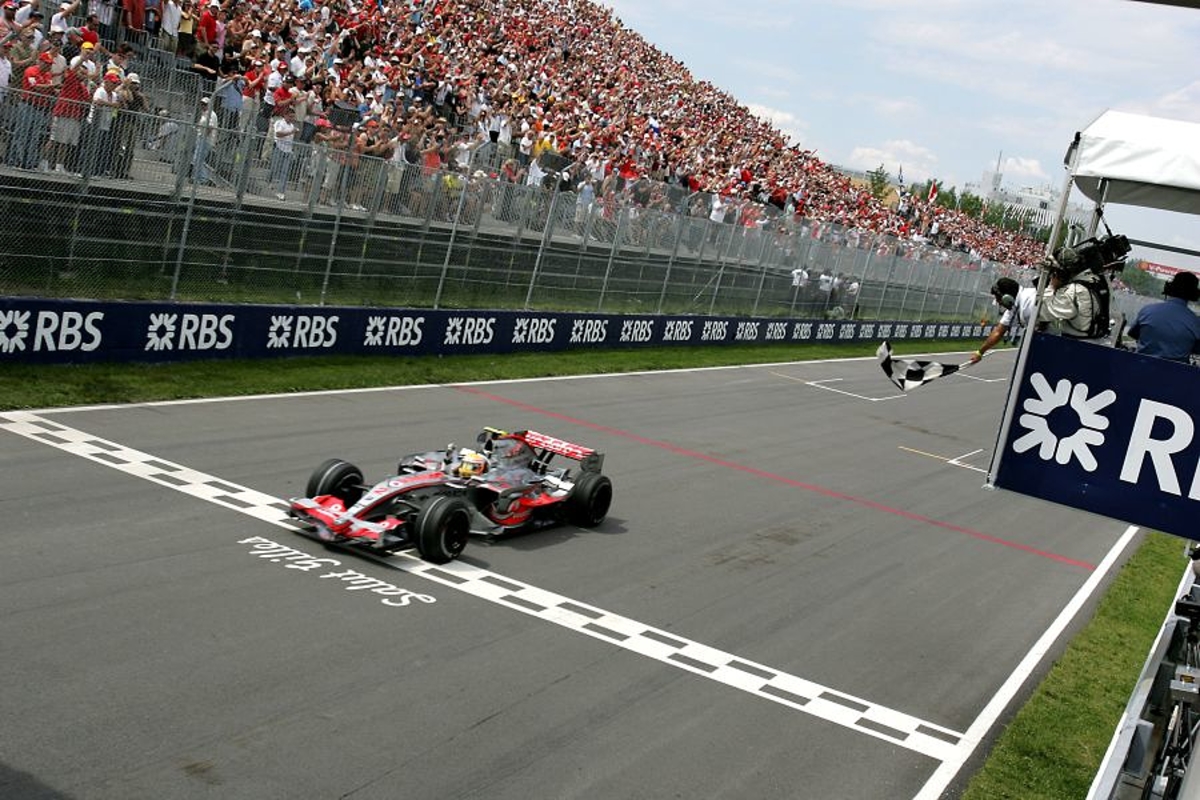The Canadian Grand Prix is special to Lewis Hamilton. So too the Circuit Gilles Villeneuve. It was there in 2007 that the seven-time world champion won his first ever F1 race.
It was a weekend remembered for many things other than Hamilton’s win and is still discussed today, but for the lad from Stevenage it was arguably the most significant milestone on his journey into F1’s Hall of Fame.
Yet, as ridiculous as it sounds, it all began with him driving radio-controlled cars.
Aged just six years old, Hamilton was already racing against (and beating) adult opposition on his way to finishing second in the national championships. He famously appeared on BBC’s Blue Peter in 1992 racing said radio-controlled cars around their equally famous garden.
It was, however, his dad’s decision to buy him his first go-kart aged just eight that started the rise and rise that would culminate in seven F1 world titles and counting.
READ MORE: F1 drivers out of contract: Hamilton heads select group
Hamilton, initially armed with only a second-hand kart, proceeded to whizz through the various karting classes as quickly as he whizzed around the Blue Peter Garden, starting with victory in the 1995 British cadet championship and concluding with the 2000 European Championship, which saw him win the title with maximum points.
Along the way, the Hamiltons, the only non-white family in most of the pits, were subject to racist comments – some snide, others overt – but the young Lewis was encouraged by his father, Anthony, to not fight it but merely use it as fuel to make him better and go faster.
And he did.
Karting glory
En route to those numerous karting titles, Hamilton had been signed to the McLaren driver development programme and in 2001, aged 16, made the move to car racing, with his first stop being the 2001 British Formula Renault Winter Series in which he finished fifth.
Again, his ascent was rapid and by 2004 he was testing for McLaren while driving in the Formula 3 Euro Series. The following year, he won that series by winning 15 of the 20 races for the ART Grand Prix team.
For the 2006 season, he moved up to ART’s team in GP2 – known today as Formula 2 – and in true Hamilton style went on to win it ahead of more experienced drivers. His victory was perfectly timely as it coincided with an opportunity opening up at McLaren beside the 2006 World Champion, Fernando Alonso.
READ MORE: Lewis Hamilton's best F1 win chance approaches – and history proves it
McLaren took the bold move of offering Hamilton the seat alongside Alonso for the 2007 season; one that proved inspired and explosive in equal measure.
Alonso, then only 25 years old, was uncomfortable with having a teammate who was quick and fearless, and who was clearly not about to kowtow to anyone, including a current world champion.
Lewis in a hurry
In the first five races of the season, it became obvious that Hamilton was in a hurry and in no mood to play the role of understudy to his more illustrious teammate.
Despite Alonso heading to Canada having won two of the five races, Hamilton had finished ahead of him in two of the previous three and the pair were tied for the lead in drivers’ championship.
Worse was to follow for Alonso when, in qualifying, Hamilton’s blistering Q3 lap of 1:15.707 gave the rookie his first pole in a time that was almost half a second quicker than the Spaniard’s, who still made P2.
In the post-qualifying presser, Alonso was asked if he had any advice for his younger colleague on his first-ever pole position. His reply was part-serious, part tongue-in-cheek.
“No advice. Don't be too aggressive in the first corner and let me go through”.
It was, however, a comment that would come back to haunt him at the start of the race.
Despite Alonso making the slightly better start of the two, the Spaniard went too deep into the first corner and with cold tyres and brakes was unable to make his move stick.
Hamilton maintained his cool under pressure and emerged in first, with Nick Heidfeld in his BMW Sauber making the most of Alonso’s error to take second.
Alonso’s early mistake was to cost him more than his place, with some damage sustained on that first corner causing him to run off the track in the exact same place on three more occasions.
But, despite Hamilton’s good start, it was to be a challenging afternoon for him in a race dominated by safety cars.
The first occurred on lap 22 when, with Hamilton already enjoying a huge 20-second lead, Adrian Sutil’s Spyker Ferrari crashed into the barrier at turn four.
Hamilton, despite seeing his lead eroded, was helped by the fact he had pitted just prior to the safety car being deployed. Less fortunate were Alonso and Nico Rosberg, who were both running short of fuel and forced to pit while the pit lane was officially closed, and who, as a result, were both given ten-second stop-go penalties.
The horror of the Villeneuve Hairpin
That first safety car was deployed for just four laps, but no sooner had it gone in than Robert Kubica’s BMW Sauber clipped the rear of Jarno Trulli's Toyota on the run down to the hairpin. As a result, Kubica's car went airborne and smashed into a concrete barrier at nearly 190 mph before rolling several times across the track.
It is widely regarded as one of F1’s most horrific crashes but, incredibly, Kubica suffered only a sprained ankle and concussion.
This time the safety car led the field around for seven laps before releasing them and, again, Hamilton maintained his form on the restart and immediately gained time and distance on Heidfeld.
With Alonso still struggling due to the damage to the underside of his car, Hamilton needed concentration and consistency to maintain his advantage over his teammate and, crucially, his race lead. He delivered both in equal measure.
The safety car was to re-appear in laps 50 and 55 – the first due to debris from a crash involving Christijan Albers and the latter due to Vitantonio Liuzzi crashing into the so-called Wall of Champions – but Hamilton’s nerve held.
The opposite applied to a frustrated Alonso, whose stricken car eventually saw him slide to seventh, but the lad from Stevenage, who had begun by guiding that radio-controlled car around the Blue Peter Garden, held on to comfortably win his first-ever Grand Prix by over four seconds.
For the record, Heidfeld held on to second and Alexander Wurz, in a Williams, finished third.
It was a masterful drive by a young man driving in only his sixth elite-level race and was described by the then ITV F1 summariser, Martin Brundle, as, “Sensational… faultless… brilliant”.
Alonso was less gracious in defeat and insisted, in an interview with ESPN F1, that Hamilton was "very lucky" to win the race.
By contrast, Hamilton’s was understandably ebullient in his post-race presser:
“It has been a fantastic day...this is history. To come here, my first time in Canada...it’s really been a fantastic season already. We’ve had six podiums, and I've been ready for the win for quite some time. It was just a matter of when and where.”
It was a smile and mood we’ve witnessed 102 times since.
While Hamilton didn’t go on to win the drivers’ championship that season – he and Alonso’s head-to-head battle ended up allowing Kimi Räikkönen to sneak through for victory – it was the start of something that changed Formula 1 forever.
Whether he can emulate that feat this weekend in the W14 remains to be seen, particularly when in competition with Red Bull’s imperious RB19, but nothing will ever sully the memory of Hamilton’s special Montreal day in the early summer of 2007.
READ MORE: Who is Angela Cullen? Confidante and rock for F1 icon Lewis Hamilton
Related






 GP AUSTRALIA
14 - 14 Mar
GP AUSTRALIA
14 - 14 Mar

 GP CHINA
21 - 21 Mar
GP CHINA
21 - 21 Mar

 GP JAPAN
4 - 4 Apr
GP JAPAN
4 - 4 Apr

 GP BAHRAIN
11 - 11 Apr
GP BAHRAIN
11 - 11 Apr

 GP SAUDI ARABIA
18 - 18 Apr
GP SAUDI ARABIA
18 - 18 Apr

 GP USA
2 - 2 May
GP USA
2 - 2 May

 GP ITALY
16 - 16 May
GP ITALY
16 - 16 May

 GP MONACO
23 - 23 May
GP MONACO
23 - 23 May

 GP SPAIN
30 - 30 May
GP SPAIN
30 - 30 May

 GP CANADA
13 - 13 Jun
GP CANADA
13 - 13 Jun

 GP AUSTRIA
27 - 27 Jun
GP AUSTRIA
27 - 27 Jun
























 Grand Prix of Belgium 2025
Grand Prix of Belgium 2025  Grand Prix of Hungary 2025
Grand Prix of Hungary 2025  Grand Prix of Azerbaijan 2025
Grand Prix of Azerbaijan 2025  Grand Prix of Singapore 2025
Grand Prix of Singapore 2025  Gran Premio de la Ciudad de Mexico 2025
Gran Premio de la Ciudad de Mexico 2025  Grande Prêmio de São Paulo 2025
Grande Prêmio de São Paulo 2025  Qatar Grand Prix 2025
Qatar Grand Prix 2025  Grand Prix of Abu Dhabi 2025
Grand Prix of Abu Dhabi 2025 